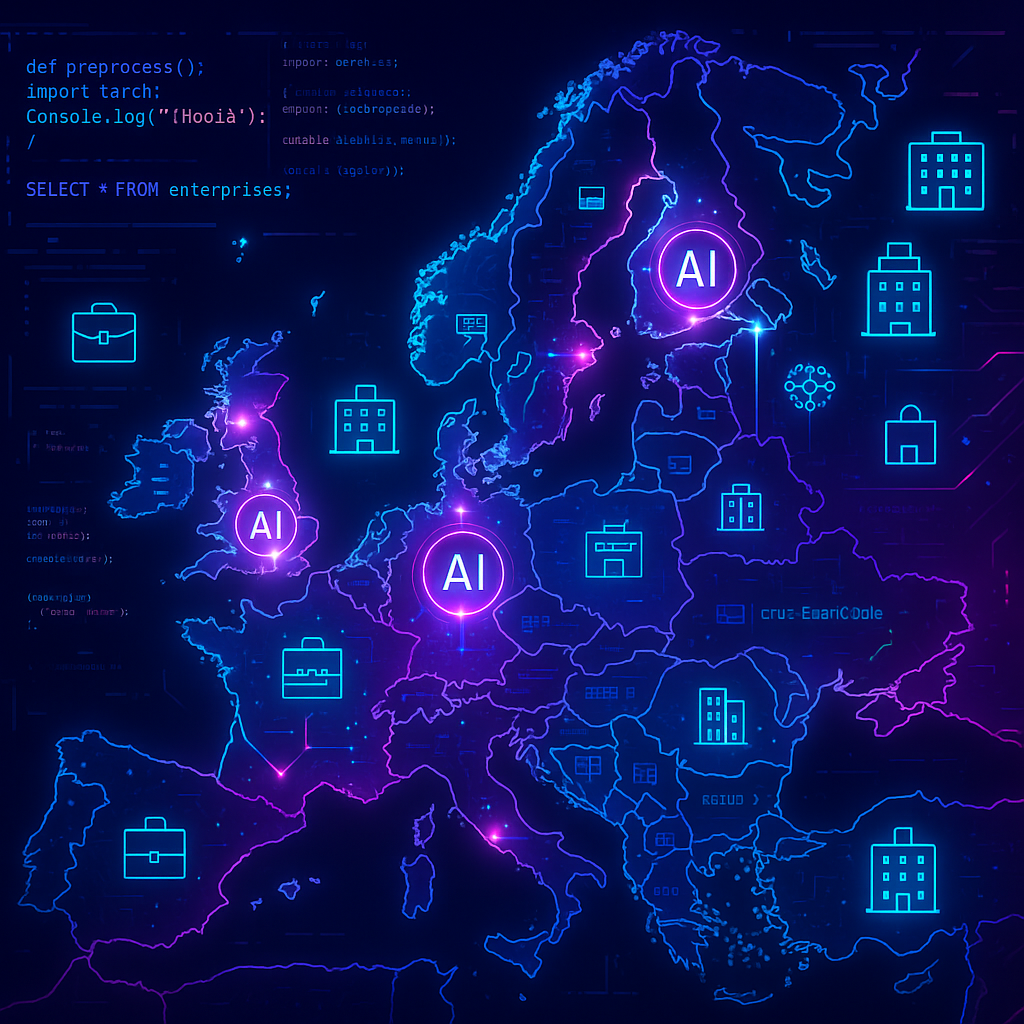Europe’s Top AI Models of 2025: Multilingual, Open, and Enterprise-Ready

Europe’s AI ecosystem in 2025 is a robust arena of open innovation, multilingual capabilities, and enterprise-grade reasoning. Below, we present an in-depth, fact-checked review of the region’s most advanced AI models, with technical specifications, licensing, and standout strengths. Each entry includes links to official model information for further exploration.
1. Mistral AI (France)
Founded in Paris in 2023, Mistral AI is a leading force in open-weight LLMs. Their models are recognized for efficiency, mixture-of-experts (MoE) architectures, and competitive benchmarks. Notably, Mistral focuses on maximizing performance-per-parameter and broad context support.
Notable Models (2025):
Strengths:
- High performance per parameter; efficient and scalable architectures.
- Enterprise, reasoning, and coding specialization.
- Open-weight Apache 2.0 licensing for key models
2. Aleph Alpha (Germany)
Heidelberg-based Aleph Alpha develops sovereign LLMs focused on multilingualism, explainability, and compliance with EU regulations.
Notable Models (2025):
Strengths:
- Emphasis on explainable and secure AI pipelines.
- EU AI Act compliance, data sovereignty, and support for public sector applications.
- Open Aleph License supports non-commercial/educational use with full transparency.
3. Velvet AI (Italy – Almawave)
Developed by Almawave and trained on the Leonardo supercomputer, Velvet models emphasize sustainability, multilingual reach, and broad industry application.
Technical Specifications (2025):
Strengths:
- Eco-friendly architecture, broad European language coverage.
- Optimized for healthcare, finance, and public administration.
- Open-source and transparency ethos.
4. Minerva (Italy)
Italy’s first LLM family built on Italian language data, Minerva is a collaborative product by Sapienza NLP, FAIR, and CINECA.
Notable Model:
Strengths:
- Designed for Italian and English linguistic performance.
- Transparent, open training data; instruction tuning for safer outputs.
5. EuroLLM-9B (EU)
A pan-European initiative supporting all 24 official EU languages, including 11 more, and released in both base and instruct forms.
Model Overview:
Strengths:
- Unmatched open multilingual coverage.
- Outperforms similar-size open models in translation and reasoning benchmarks.
- Synthetic datasets, EuroFilter technology for balancing languages.
6. LightOn (France)
Paris-based LightOn offers enterprise-grade, on-premises, privacy-focused generative AI. In 2024, it became Europe’s first generative AI startup to IPO.
Model Summary:
Strengths:
- Supports fully private, on-prem deployment.
- Integrates domain specialization and optical computing research.
Comparison Table
*Context window sizes for Minerva and EuroLLM may vary by implementation and release.
Conclusion
Europe’s AI advances in 2025 reflect an environment focused on openness, sustainability, multilingual support, and compliance. Mistral leads with agile, performant models; Aleph Alpha pioneers explainability and data sovereignty; Italy’s Minerva and Velvet address national language and sustainable training; EuroLLM sets the bar for inclusivity; and LightOn delivers enterprise-grade privacy solutions.
These collective efforts position Europe as an increasingly influential player in global AI, particularly in the realms of multilingualism, ethical innovation, and technical openness.
Asif Razzaq is the CEO of Marktechpost Media Inc.. As a visionary entrepreneur and engineer, Asif is committed to harnessing the potential of Artificial Intelligence for social good. His most recent endeavor is the launch of an Artificial Intelligence Media Platform, Marktechpost, which stands out for its in-depth coverage of machine learning and deep learning news that is both technically sound and easily understandable by a wide audience. The platform boasts of over 2 million monthly views, illustrating its popularity among audiences.













